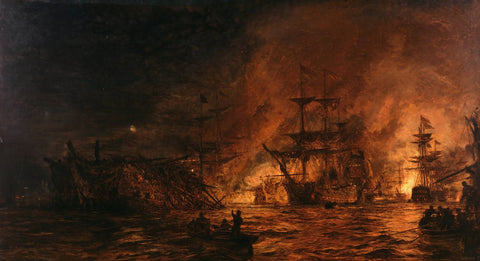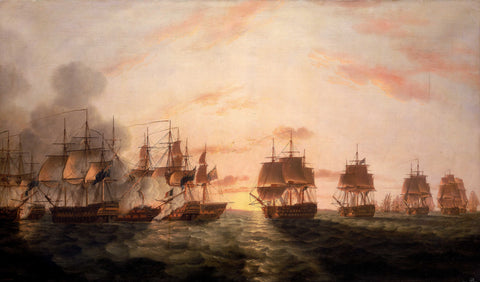- Australia ▾
- Topographic
▾
- Australia AUSTopo 250k (2024)
- Australia 50k Geoscience maps
- Australia 100k Geoscience maps
- Australia 250k Geoscience maps
- Australia 1.1m Geoscience maps
- New Zealand 50k maps
- New Zealand 250k maps
- New South Wales 25k maps
- New South Wales 50k maps
- New South Wales 100k maps
- Queensland 10k maps
- Queensland 25k maps
- Queensland 50k maps
- Queensland 100k maps
- Compasses
- Software
- GPS Systems
- Orienteering
- International ▾
- Wall Maps
▾
- World
- Australia & New Zealand
- Countries, Continents & Regions
- Historical
- Vintage National Geographic
- Australian Capital Territory
- New South Wales
- Northern Territory
- Queensland
- South Australia
- Tasmania
- Victoria
- Western Australia
- Celestial
- Children's
- Mining & Resources
- Wine Maps
- Healthcare
- Postcode Maps
- Electoral Maps
- Nautical ▾
- Flags
▾
- Australian Flag Sets & Banners
- Flag Bunting
- Handwavers
- Australian National Flags
- Aboriginal Flags
- Torres Strait Islander Flags
- International Flags
- Flagpoles & Accessories
- Australian Capital Territory Flags
- New South Wales Flags
- Northern Territory Flags
- Queensland Flags
- South Australia Flags
- Tasmania Flags
- Victoria Flags
- Western Australia Flags
- Gifts ▾
- Globes ▾
Dear valued customer. Please note that our checkout is not supported by old browsers. Please use a recent browser to access all checkout capabilities
The Battle of Trafalgar by Joseph Mallord William Turner
$69.95
or make 4 interest-free payments of
$17.49 AUD
fortnightly with
![]() More info
More info
The Battle of Trafalgar — J. M. W. Turner (1824)
Sky, sail, and thunder in a single, searing vision. This fine-art reproduction—after J. M. W. Turner’s royal-command canvas—compresses Trafalgar’s fury into a symbolic panorama where ships tower like moving citadels and men are small against wind and fate. Commissioned by George IV in 1822 for St James’s Palace as a pendant to de Loutherbourg’s Glorious First of June, Turner forged his most ambitious tribute to Nelson: researched from Admiralty plans, shipboard sketches of HMS Victory, and two preparatory oils—then painted with the tempestuous light that made him legend.
Why it captivates
-
Royal command, radical vision — the only Turner painted by royal commission, and the most publicly debated of his career.
-
Symbol over sequence — multiple incidents fused into one monumental image that reads as destiny, not reportage.
-
Nelson implied, not displayed — the hero’s absence felt in the crowd at Victory’s mainmast and a falling mast bearing his flag.
-
Flags that speak — signal code “d-u-t-y” coming down; motto “Palmam qui meruit ferat” submerged like a reckoning.
-
Human scale vs. sea power — tiny figures against colossal hulls, smoke, and collapsing spars.
-
Conversation-starting provenance — controversy at court; later gifted (1829) to the Naval Gallery, Greenwich, where it remains.
What you’ll see
At the centre, HMS Victory looms at an exaggerated scale, a symbol of British sea power. Her foremast falls, carrying the white vice-admiral’s flag; from the mainmast the signal flags spelling “d-u-t-y” descend. In the right mid-ground the French Redoutable—from which Nelson was shot—has struck and sinks (Turner’s dramatic license; she actually foundered in the post-battle storm). Foreground boats cheer and labour at rescues; a Union flag spreads like a shroud above a tangle of rigging that suggests a monster’s head. At original eye level, a dead seaman arches backward out of the picture plane, forcing the cost of victory upon us. To the left recede the Spanish Santísima Trinidad and French Bucentaure (Villeneuve’s flagship); further left, Achille (74) burns while Neptune’s bow enters frame. Far right, half-lost in smoke, the ship Turner later immortalised as “The Fighting Temeraire.”
A richer historical frame
Turner revered Nelson. For this work he borrowed Admiralty plans of Victory, asked marine painter J. C. Schetky at Portsmouth for fresh drawings, and—unusually—made two oil studies (now in the Tate). Delivered in 1824, the painting scandalised some contemporaries for its non-chronological montage and stark hints at the blood price of empire. After eleven unpaid days adjusting it to Admiralty opinions, Turner remained dissatisfied; yet the Duke of Clarence (later William IV) gave the critique he respected. By late 1829, the King presented both Turner’s canvas and de Loutherbourg’s pendant to Greenwich Hospital, fixing this blazing, ambivalent Trafalgar in Britain’s maritime memory.
Choose your finish
🌟 Heavyweight Paper (160 gsm matte)
-
Archival-grade, smooth matte stock—ideal for framing under glass.
-
Preserves fine linework and Turneresque tonal gradations with minimal glare.
💎 Laminated (True Encapsulation)
-
Encapsulated in 2 × 80-micron gloss laminate, sealed edge-to-edge for durability.
-
Wipe-clean surface—perfect for classrooms, studios, and high-traffic spaces.
🪵 Laminated + Timber Hang Rails (Ready to hang)
-
Lacquered natural timber rails with fitted hanging cord; polished, frame-free presentation.
-
Please allow up to 10 working days for hang-railed delivery.
🏆 Archival Canvas (395 gsm HP Professional Matte)
-
Museum-quality texture with pigment-based, fade-resistant inks for deep blacks and luminous highlights.
🪵 Canvas + Timber Hang Rails (Gallery-ready)
-
As above, supplied with lacquered natural timber rails and hanging cord.
-
Please allow up to 10 working days for hang-railed delivery.
Size (W × H)
841 × 595 mm (approx. 33.11 × 23.43 in)
-
Orientation: Landscape
-
Aspect ratio: ~1.414 : 1 (A-series proportion)
-
Nearest standard frame: A1 (594 × 841 mm) — landscape
-
Framing tips:
-
Classic look: Use an A1 frame with a mat window cut slightly undersize (e.g., ~837 × 591 mm) to overlap edges by 2–3 mm.
-
Contemporary look: Float-mount in an A1 frame; the ~1 mm height difference to A1 is easily absorbed by the mat cavity.
-
Custom sizing: Available on request (alternate aspect ratios or added white border).
Specifications
| Feature | Details |
|---|---|
| Title | The Battle of Trafalgar, 21 October 1805 |
| Painted/Date | J. M. W. Turner, 1824 (royal command; delivered for St James’s Palace) |
| Historical Context | Composite, symbolic vision of Trafalgar; Nelson implied at Victory’s mainmast; signal “d-u-t-y” descending |
| Commission/Provenance | Commissioned by George IV (advised by Sir Thomas Lawrence); pendant to de Loutherbourg’s Glorious First of June; later gifted (1829) to Greenwich Hospital |
| Print Size | 841 mm (W) × 595 mm (H) |
| Available Finishes | Paper, Laminated, Laminated + Timber Hang Rails, Canvas, Canvas + Timber Hang Rails |
| Paper Weight | 160 gsm archival matte |
| Laminate | 2 × 80-micron gloss (true encapsulation) |
| Canvas Weight | 395 gsm HP Professional Matte Canvas |
| Inks | Pigment-based, fade-resistant |
| Optional Hang Rails | Natural timber, lacquered; fitted hanging cord (allow up to 10 working days) |
| Origin | Printed in Australia |
Who it’s for
-
Art historians & curators exploring Turner’s royal commission and maritime modernity
-
Maritime enthusiasts seeking a Trafalgar that balances spectacle with human cost
-
Educators & museums teaching signal lore, symbolism, and naval iconography
-
Interior stylists designing heritage-rich rooms with a dramatic centrepiece
-
Collectors of British Romantic and marine art reproductions
Our Commitment
Every print is produced locally in Australia on premium substrates with careful colour management, then checked and packed by hand so it arrives ready to impress. From studio to wall, we stand behind the craftsmanship and historical integrity of your piece.
Bring Turner’s blazing, debated Trafalgar into your space—order your fine-art print today.







